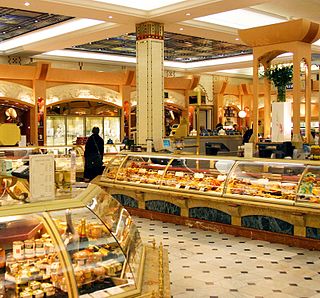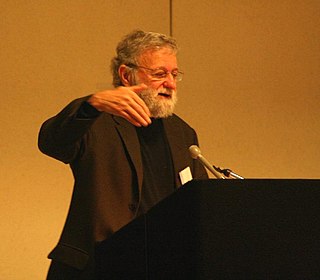Systems design is the process of defining the architecture, modules, interfaces, and data for a system to satisfy specified requirements. Systems design could be seen as the application of systems theory to product development. There is some overlap with the disciplines of systems analysis, systems architecture and systems engineering.
Corporate branding refers to the practice of promoting the brand name of a corporate entity, as opposed to specific products or services. The activities and thinking that go into corporate branding are different from product and service branding because the scope of a corporate brand is typically much broader. It should also be noted that while corporate branding is a distinct activity from product or service branding, these different forms of branding can, and often do, take place side-by-side within a given corporation. The ways in which corporate brands and other brands interact is known as the corporate brand architecture.

Usability is the ease of use and learnability of a human-made object such as a tool or device. In software engineering, usability is the degree to which a software can be used by specified consumers to achieve quantified objectives with effectiveness, efficiency, and satisfaction in a quantified context of use.
Interaction design, often abbreviated as IxD, is "the practice of designing interactive digital products, environments, systems, and services." Beyond the digital aspect, interaction design is also useful when creating physical (non-digital) products, exploring how a user might interact with it. Common topics of interaction design include design, human–computer interaction, and software development. While interaction design has an interest in form, its main area of focus rests on behavior. Rather than analyzing how things are, interaction design synthesizes and imagines things as they could be. This element of interaction design is what characterizes IxD as a design field as opposed to a science or engineering field.
Service design is the activity of planning and organizing people, infrastructure, communication and material components of a service in order to improve its quality and the interaction between the service provider and its customers. Service design may function as a way to inform changes to an existing service or create a new service entirely.

Servicescape is a model developed by Booms and Bitner to emphasize thee impact of the physical environment in which a service process takes place. The aim of the servicescapes model is to explain behavior of people within the service environment with a view to designing environments that does not accomplish organisational goals in terms of achieving desired behavioural responses. For consumers visiting a service or retail store, the service environment is the first aspect of the service that is perceived by the customer and it is at this stage that consumers are likely to form impressions of the level of service they will receive.
A persona, in user-centered design and marketing is a fictional character created to represent a user type that might use a site, brand, or product in a similar way. Marketers may use personas together with market segmentation, where the qualitative personas are constructed to be representative of specific segments. The term persona is used widely in online and technology applications as well as in advertising, where other terms such as pen portraits may also be used.

In manufacturing and design, a mockup, or mock-up, is a scale or full-size model of a design or device, used for teaching, demonstration, design evaluation, promotion, and other purposes. A mockup is a prototype if it provides at least part of the functionality of a system and enables testing of a design. Mock-ups are used by designers mainly to acquire feedback from users. Mock-ups address the idea captured in a popular engineering one-liner: You can fix it now on the drafting board with an eraser or you can fix it later on the construction site with a sledge hammer.
User experience design is the process of enhancing user satisfaction with a product by improving the usability, accessibility, and pleasure provided in the interaction with the product. User experience design encompasses traditional human–computer interaction (HCI) design, and extends it by addressing all aspects of a product or service as perceived by users.
Brand engagement is the process of forming an emotional or rational attachment between a consumer and a brand. It comprises one aspect of brand management.
Digital marketing is the marketing of products or services using digital technologies, mainly on the Internet, but also including mobile phones, display advertising, and any other digital medium.

A brand is an overall experience of a customer that distinguishes an organization or product from its rivals in the eyes of the customer. Brands are used in business, marketing, and advertising. Name brands are sometimes distinguished from generic or store brands.
Experiential interior design (EID) is the practice of employing experiential values in interior experience design. EID is a new design approach to interior architecture based on modern environmental psychology emphasizing human experiential needs. The notion of EID is initiated from the subjective impact of a designed environment on experience formation. This environmental experience is defined as the result of human and environment interactions providing intellectual or emotional acquisition. The main application of EID is to create engaging environmental experiences.
User research focuses on understanding user behaviors, needs, and motivations through observation techniques, task analysis, and other feedback methodologies. This field of research aims at improving the usability of products by incorporating experimental and observational research methods to guide the design, development, and refinement of a product. User researchers often work alongside designers, engineers, and programmers in all stages of product creation and idealization.
Employee experience design is the application of experience design in order to intentionally design HR products, services, events, and organisational environments with a focus on the quality of the employee experience whilst providing relevant solutions for an organisation.





